
塑料体积电阻率测定仪 电阻的作用:
电阻在电路中的作用:利用著名的欧姆定律可以利用电阻控制电路中的电压、电流。
电阻的主要物理特征就是可以变电能为热能,因此热水器中的发热元件、电灯泡、电烫斗就是利用了电阻的作用制成的。另外电阻有怕热的特性,当导体材料温度升高时材料的电阻率会增大(有些材料则表现为减小),因此利用电阻的这种特性可以制作温度测量计(不知道你看见过没,插一根“铁丝”就能测量温度的方法就是利用了这种电阻材料作用的)。
另外一些材料的电阻还会受到光线照射的印象,而利用这样的材料可以制成光敏电阻,利用这点作用可以方便的设计光控电路以及光的测量和光电转换等领域。
塑料体积电阻率测定仪 报告
报告应至少包括下述情况:
a)电阻率测试仪(电阻率测定仪)关于材料的说明和标志(名称、等级、颜色、制造商等);
b)电阻率测试仪(电阻率测定仪)试样的形状和尺寸;
c)电阻率测试仪(电阻率测定仪)电极和保护装置的形式、材料和尺寸;
d)电阻率测试仪(电阻率测定仪)试样的处理(清洁、预干燥、处理时间、湿度和温度)等;
e)电阻率测试仪(电阻率测定仪)试验条件(试样温度、相对由度);
f)电阻率测试仪(电阻率测定仪)测量方法;
g)电阻率测试仪(电阻率测定仪)施加电压;
h)电阻率测试仪(电阻率测定仪)体和、电阻率(需要时);
注1:当规定了一个固定的电化时间时,注明此时间,给出个别值,并报告中值作为体积电阻率。
注2: 当在不同的电化时间后测试时,应按如下要求报告:
当在相同的电化时间里试样达到一个稳定状态肘,给出个别值,并报告中值作为体积电阻率。在这个电化时间里有某些试样不能达到稳定状态,则报告不能达到稳定状态的试样数,并分别地给出它们的结果。当测试结果取决于电化时间时,则报告它们之间的关系,例如.以图的形式或给出在电化Imin、10min和100min后的体积电阻率的中值。
i)表面电阻率(需要时):
给出电化时间为1 min的个别值,并报告其中值作为表面电阻率。
说明
1.电阻率ρ不仅和导体的材料有关,还和导体的温度有关。在温度变化不大的范围内:几乎所有金属的电阻率随温度作线性变化,即ρ=ρo(1 at)。式中t是摄氏温度,ρo是O℃时的电阻率,a是电阻率温度系数。
2.由于电阻率随温度改变而改变,所以对于某些电器的电阻,必须说明它们所处的物理状态。如一个220 V -100 W电灯灯丝的电阻,通电时是484欧姆,未通电时只有40欧姆左右。
3.电阻率和电阻是两个不同的概念。电阻率是反映物质对电流阻碍作用的属性,电阻是反映物体对电流阻碍作用的能力大小。
4.超导体的直流电阻率在一定的低温下突然消失,被称作零电阻效应。导体没有了电阻。
参数:
1、电阻测量范围:0.01?104Ω~1?1018Ω。
2、电流测量范围:2?10-4A~1?10-16A
3、显 示 方 式:液晶、电阻、电流双显示
4、内置测试电压:10V、50V、100V、250V、500V、1000V(任意切换);
5、基本准确度:≤1%;
6、使用环境:温度:0℃~40℃,相对湿度<80%
7、供电形式:AC 220V,50HZ,功耗约5W
8、全自动测量、体积小、重量轻、准确度高,电阻、电流双显示,性能好稳定、读数方便
9、所有测试电压(10V/50V/100/250/500/1000V)测试时电阻结果直读
10、配置:
主机:一台
屏蔽箱 电极:一套
测试线:五条
说明书 合格证 保修卡:各一份
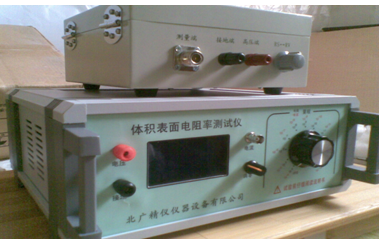
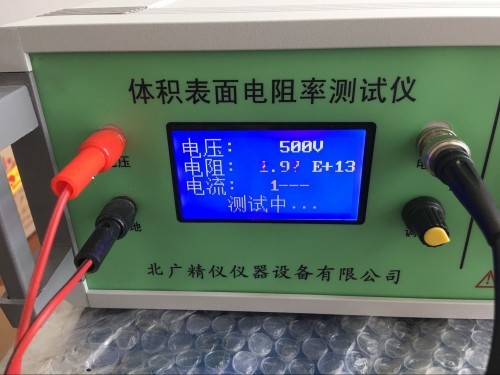
电阻定律
导体的电阻R跟它的长度L、电阻率ρ成正比,跟它的横截面积S成反比,这个规律就叫电阻定律(law of resistance),公式为R=ρL/S。其中ρ:制成电阻的材料的电阻率,L:绕制成电阻的导线长度,S:绕制成电阻的导线横截面积,R:电阻值。
公式:R=ρL/S,R=U/I
ρ——制成电阻的材料电阻率,国际单位制为欧姆?米(Ω ? m);
L——绕制成电阻的导线长度,国际单位制为米(m);
S——绕制成电阻的导线横截面积,国际单位制为平方米(m2) ;
R——电阻值,国际单位制为欧姆,简称欧(Ω);
U——电压值,国际单位制为伏特,简称伏(v);
I——电流值,国际单位制为安培,简称安(A)。
其中:
ρ叫电阻率:某种材料制成的长1米、横截面积是1平方毫米的导线的电阻,叫做这种材料的电阻率。是描述材料性质的物理量。国际单位制中,电阻率的单位是欧姆?米,常用单位是欧姆?平方毫米/米。与导体长度L,横截面积S无关,只与物体的材料和温度有关,有些材料的电阻率随着温度的升高而增大,有些反之。
law of resistance
The resistance R of a conductor is directly proportional to its length L and resistivity ρ, and inversely proportional to its cross-sectional area S. This law is called the law of resistance, and the formula is R=ρ L/S. Where ρ: the resistivity of the material used to make the resistor, L:The length of the wire wound into a resistor, S:The cross-sectional area of the wire wound into a resistor, R:Resistance value.
Formula: R=ρL/S,R=U/I
ρ - the resistivity of the material used to make the resistor, measured in ohms meters (Ω? m) in the International System of Units;
L - the length of the wire wound into a resistor, measured in meters (m) in the International System of Units;
S - cross-sectional area of the wire wound into a resistor, measured in square meters (m2) in the International System of Units;
R - resistance value, expressed in ohms in the International System of Units, abbreviated as ohms (Ω);
U - voltage value, expressed in volts in the International System of Units, abbreviated as volts (v);
I - Current value, expressed in Ampere (A) in the International System of Units.
Among them:
ρ is called resistivity: The resistance of a wire made of a certain material that is 1 meter long and has a cross-sectional area of 1 square millimeter is called the resistivity of this material. It is a physical quantity that describes the properties of materials. In the International System of Units, the unit of electrical resistivity is ohms per meter, and the commonly used unit is ohms per square millimeter per meter. It is not related to the length L and cross-sectional area S of the conductor, but only to the material and temperature of the object. The resistivity of some materials increases with increasing temperature, while others do not.
体积电阻volume resistance
在试样两相对表面上放置的两电极间所加直流电压与流过这两个电极之间的稳态电流之商,不包括沿试样表面的电流,在两电极上可能形成的极化忽略不计
注:除非另有规定,体积电阻是在电化一分钟后测定
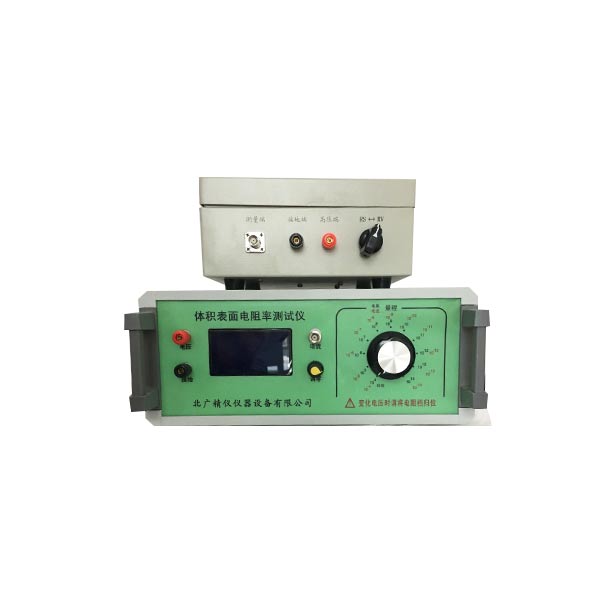
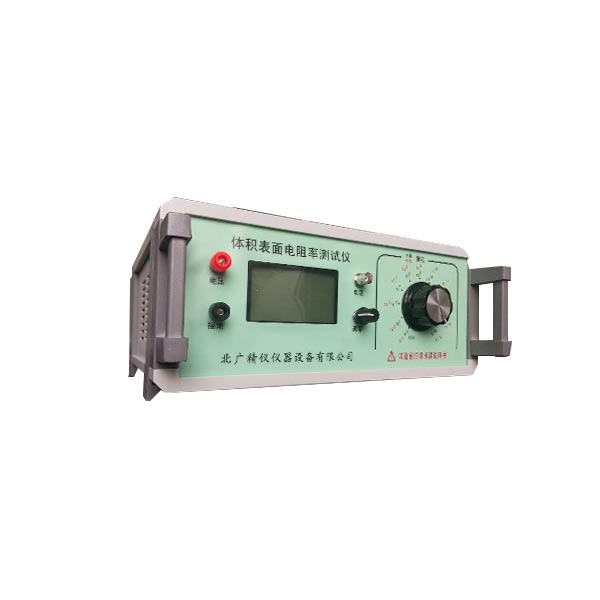
体积电阻率:在绝缘材料里面的直流电场强度和稳态电流密度之商,即单位体积内的体积电阻。
注:体积电阻率的SI单位是12 "m。实际上也使用fE " cm这一单位。
电极electrodes
电极是具有一定形状、尺寸和结构的与被测试样相接触的导体。
注:绝缘电阻是加在与试样相接触的两电极之间的直流电压与通过两电极的总电流之商 绝缘电阻取决于试样的表面电阻和体积电阻(见GB/T 10064-2006)
Volume resistance
The quotient of the direct current voltage applied between the two electrodes placed on opposite surfaces of the sample and the steady-state current flowing between these two electrodes, excluding the current along the sample surface, and ignoring the polarization that may form on the two electrodes
Note: Unless otherwise specified, the volume resistance is measured one minute after electrification
Volume resistivity: The quotient of the DC electric field strength and steady-state current density in an insulating material, which is the volume resistance per unit volume.
Note: The SI unit for volume resistivity is 12 "m. In fact, the unit fE" cm is also used.
Electrode
An electrode is a conductor with a certain shape, size, and structure that comes into contact with the tested sample.
Note: Insulation resistance is the quotient of the direct current voltage applied between the two electrodes in contact with the sample and the total current passing through the two electrodes. The insulation resistance depends on the surface resistance and volume resistance of the sample (see GB/T 10064-2006)
电源
要求有很稳定的直流电压源。这可用蓄电油或一个整流稳压的电摞来提供。对电源的稳定度要求是由电压变化导致的电流变化与被测电流相比可忽略不计。
加到整个试样上的试验电压通常规定为100V、250V、500V、1000 V、2500 V、5000 V, 10000 V和15000 V。 常用的电压是100V、500V和1000 V。
在某些情况下,试样的电阻与施加电压的极性有关
如果电阻是与极性有关的,则宜加以注明。取两次电阻值的几何平均值(对数算术平均值的反对数)作为结果。
由于试样电阻可能与电压有依存关系,因此应在报告中注明试验电压值。
保护
组成测量线路的绝缘材料,好应具有与被试材料差不多的性能。试样的测量误差可以由下列原因产生:
a)外来寄生电压引起的杂散电流,通常不知道它的大小,并具有漂移的特点;
b)具有未知而易变的电阻值的绝缘与试样电阻、标准电阻器或电流测量装置的不正常的分路。 使线路所有部分在使用状态下有尽可能高的绝缘电阻来近似地修正这些影响因素。这种做法可能导致测试设备很笨重,而又不足以测量高于几百兆欧的绝缘电阻。较为满意的修正方法是使用保护技术来实现。
保护就是在所有关键的绝缘部位插入保护导体,保护导体截住所有可能引起误差的杂散电流。这些保护导体联接在一起,组成保护系统并与测量端形成兰端网络。当线路联接恰当时,所有外来寄生电压产生的杂散电流被保护系统分流到测量电路以外,任一测量瑞到保护系统的绝缘电阻与一电阻低得多的线路元件并联,试样电阻仅限于两测量端之间。采用这个技术可大大地减小误差概率。图1为使 用保护电极测量体积电阻和表面电阻的基本线路。
图5和图7给出了电流测量法中保护系统的使用方法,图中指出保护系统接到电源和电流测量装 置的连接点。图6表示惠斯登电桥法,其保护系统接到两个较低电阻值的桥臂的连接点上。在所有情况下,保护系统必须完善,包括对测试人员在测量时操作的任何控制仪器的保护。
在保护端和被保护端之间所存在的电解电动势、接触电动势或热电动势较小时,均能被补偿掉,使这样的电动势在测量中不会引人显著的误差。
在电流测量法中,由于电流测量装置与被保护端和保护系统之间的电阻并联可能产生误差,因此,这个电阻宜至少为电流测量装置电阻的10倍,好为100倍。在有些电桥法中,保护端和测量端具有 大致相同的电位,不过电桥中的→个标准电阻器与不保护端和保护系统之间的电阻是并联的。这个电 阻应至少为标准电阻的10倍,好为100倍。
为确保设备的操作令人满意,应先断开电源和试样的连线进行一次测量。此时,设备应在它的灵敏度许可范围内指示出元穷大的电阻。如果有一些己知电阻值的标准电阻,则可用来检查设备运行是否良好。
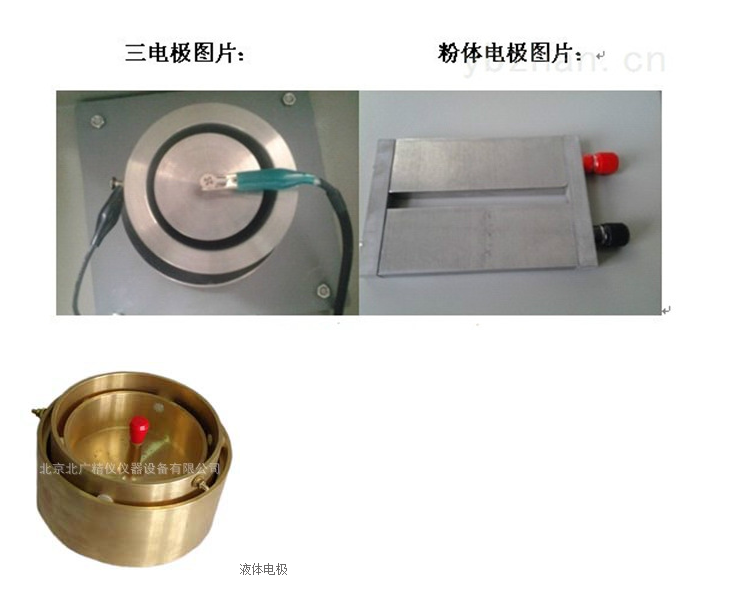
条件处理
试样的处理条件取决于被试材料,这些条件应在材料规范中规定。
推荐按GB/T 10580一2003进行条件处理;由各种盐溶液所产生的相对温度在IEC 60260中给出。
可以采用机械蒸发系统。
体积电阻率和表面电阻率都对温度变化特别敏感。这种变化是指数式的。因此必须在规定的条件下来测量试样的体积电阻和表面电阻。由于水分被吸收到电介质内是相对缓慢的过程,因此测定温度对体积电阻率的影响需要延长处理期。吸收水分后通常会降低体积电阻。有些试样可能需要处理数月才能达到平衡。
protect
The insulation material that constitutes the measurement circuit should have similar performance to the tested material. The measurement error of the sample can be caused by the following reasons:
a) The stray current caused by external parasitic voltage is usually unknown in magnitude and has the characteristic of drift;
b) Abnormal branching of insulation and sample resistance, standard resistors, or current measuring devices with unknown and variable resistance values. To approximate the correction of these influencing factors by ensuring that all parts of the circuit have the highest possible insulation resistance during use. This approach may result in testing equipment that is bulky and insufficient to measure insulation resistance above a few hundred megaohms. A more satisfactory correction method is to use protective technology to achieve it.
Protection means inserting protective conductors at all critical insulation locations to intercept all stray currents that may cause errors. These protective conductors are connected together to form a protection system and form a blue end network with the measuring end. When the line connection is appropriate, all stray currents generated by external parasitic voltages are diverted by the protection system to outside the measurement circuit. The insulation resistance of any measurement device to the protection system is connected in parallel with a much lower resistance line component, and the sample resistance is limited to between the two measurement ends. Using this technology can greatly reduce the probability of errors. Figure 1 shows the basic circuit for measuring volume resistance and surface resistance using protective electrodes.
Figures 5 and 7 show the usage of the protection system in the current measurement method, indicating the connection point between the protection system and the power supply and current measurement device. Figure 6 shows the Wheatstone bridge method, where the protection system is connected to the connection point of two bridge arms with lower resistance values. In all cases, the protection system must be comprehensive, including protection for any control instruments operated by testing personnel during measurement.
When the electrolytic electromotive force, contact electromotive force, or thermoelectric electromotive force existing between the protected end and the protected end is small, it can be compensated for, so that such electromotive force will not cause significant errors in measurement.
In the current measurement method, errors may occur due to the parallel connection of the resistance between the current measurement device, the protected end, and the protection system. Therefore, this resistance should be at least 10 times the resistance of the current measurement device, preferably 100 times. In some bridge methods, the protection end and the measurement end have roughly the same potential, but the → standard resistors in the bridge are connected in parallel with the resistance between the unprotected end and the protection system. This resistor should be at least 10 times the standard resistor, preferably 100 times.
To ensure satisfactory operation of the equipment, the power supply and sample connection should be disconnected for a measurement first. At this point, the device should indicate the maximum resistance within its sensitivity range. If there are some standard resistors with known resistance values, they can be used to check whether the equipment is running well.
影响电阻率的外界因素
电阻率不仅与材料种类有关,而且还与温度、压力和磁场等外界因素有关。金属材料在温度不高时,ρ与温度t(℃)的关系是ρt=ρ0(1 at),式中ρt与ρ0分别是t℃和0℃时的电阻率;α是电阻率的温度系数,与材料有关。锰铜的α约为1?10-1/℃(其数值极小),用其制成的电阻器的电阻值在常温范围下随温度变化极小,适合于作标准电阻。已知材料的ρ值随温度而变化的规律后,可制成电阻式温度计来测量温度。半导体材料的α一般是负值且有较大的量值。制成的电阻式温度计具有较高的灵敏度。有些金属(如Nb和Pb)或它们的化合物,当温度降到几K或十几K(绝对温度)时,ρ突然减少到接近零,出现超导现象,超导材料有广泛的应用前景。利用材料的ρ随磁场或所受应力而改变的性质,可制成磁敏电阻或电阻应变片,分别被用来测量磁场或物体所受到的机械应力,在工程上获得广泛应用。
体积电阻
在测试以前应使试样具有电介质稳定状态。为此,通过测量装置将试样的测量电极1和3短路 (图la)),逐步增加电流测量装置的灵敏度到符合要求,同时观察短路电流的变化,如此继续到短路电 流达到相当恒定的值为止,此值应小于电化电流的稳定值,或者小于电化100min的电流。由于短路电 流有可能改变方向,因此即使电流为零,也要维持短路状态到需要的时间。当短路电流Io变得基本恒 定时(可能需要几小时),记下Io的值和方向。
然后加上规定的直流电压井同时开始记时。除非另有规定,在如下每个电化时间作一次测量:1 min、2min、5min、10min、50min、100min。如果连续两次测量得出同样的结果,责可以结束试验并用这个电流值来计算体积电阻。记录次观察到相同测量结果时的电化时间。如果在100min内不 能达到稳定状态,则记录体积电阻与电化时间的函数关系。
作为验收试验,按照有关规范的规定,使用一个固定的电化时间如lmin后的电流值来计算体积电阻率。
产品保修承诺:
1、免费送货到用户指定的地点,免费指导安装、培训及调试。
2、保修期内人为损坏的零部件按采购(加工)价格收费更换。
3、保修期外继续为用户提供优质技术服务,在接到用户维修邀请后3天内派工程师到达用户现场进行维修。并享有优惠购买零配件的待遇。
4、传感器过载及整机电路超压损坏不在保修范围内。
5、产品质保期:自安装正常使用日起一年;
6、软件升级:终生免费提供新版本控制软件。
体积电阻率与表面电阻的区别
体积电阻率和表面电阻是材料电学性能的两个重要参数,但两者针对的测试对象和应用场景不同。以下是两者的主要区别:
1. 定义与物理意义
体积电阻率(Volume Resistivity)
体积电阻率是衡量材料内部导电性能的参数,表示单位体积材料对电流的阻碍能力。
体积电阻率反映材料本身的绝缘或导电特性,与材料的成分、结构及温度密切相关。例如,绝缘塑料的 可达12次方-16次方,而金属的 仅为 10的-6}- 10^-4次方 。
表面电阻(Surface Resistance)
表面电阻是衡量材料表面导电性能的参数,表示电流沿材料表面流动时的阻碍能力。
表面电阻受材料表面状态(如污染、湿度、氧化层)影响显著,常用于评估材料的防静电性能或漏电风险。
2. 测量方法与电极配置
-体积电阻率测量
- 电极设计:使用三电极系统(如保护环电极),确保电流仅通过材料内部,避免表面电流干扰。
- 测试标准:如 ASTM D257、IEC 60093。
- 适用场景:块状固体材料(如塑料、陶瓷、橡胶)的绝缘性能评估。
- 表面电阻测量
-电极设计:采用平行电极或同心环电极,使电流沿材料表面流动。
-测试标准:如 ASTM D4496、IEC 61340。
-适用场景:薄膜、涂层、纺织品等表面导电性能测试,或防静电材料的筛选。
3. 应用领域差异
参数
体积电阻率:
核心用途评估材料内部绝缘
典型应用电线绝缘层、电子封装材料、高压设备
关键影响因素材料成分、温度、杂质浓度
表面电阻:评估材料表面导电/防静电性能 导电性
影响因素表面清洁度、湿度、污染、氧化层
4. 实例对比
绝缘塑料板:
体积电阻率高于15次方,说明内部绝缘性能优异;
- 表面电阻可能因吸附水分而降低于12次方,表明表面存在微弱导电性。
5. 总结
体积电阻率:表征材料整体的绝缘或导电能力,是材料本征属性的体现。
表面电阻:反映材料表面的导电特性,易受环境因素和表面状态影响。
两者在科研、工业质检中常需同时测试,以全面评估材料的电学性能(如高压绝缘材料需高体积电阻率 高表面电阻,而防静电材料需中等体积电阻率 低表面电阻)。
业务咨询:932174181 媒体合作:2279387437 24小时服务热线:15136468001 盘古机械网 - 全面、科学的机械行业免费发布信息网站 Copyright 2017 PGJXO.COM 豫ICP备12019803号